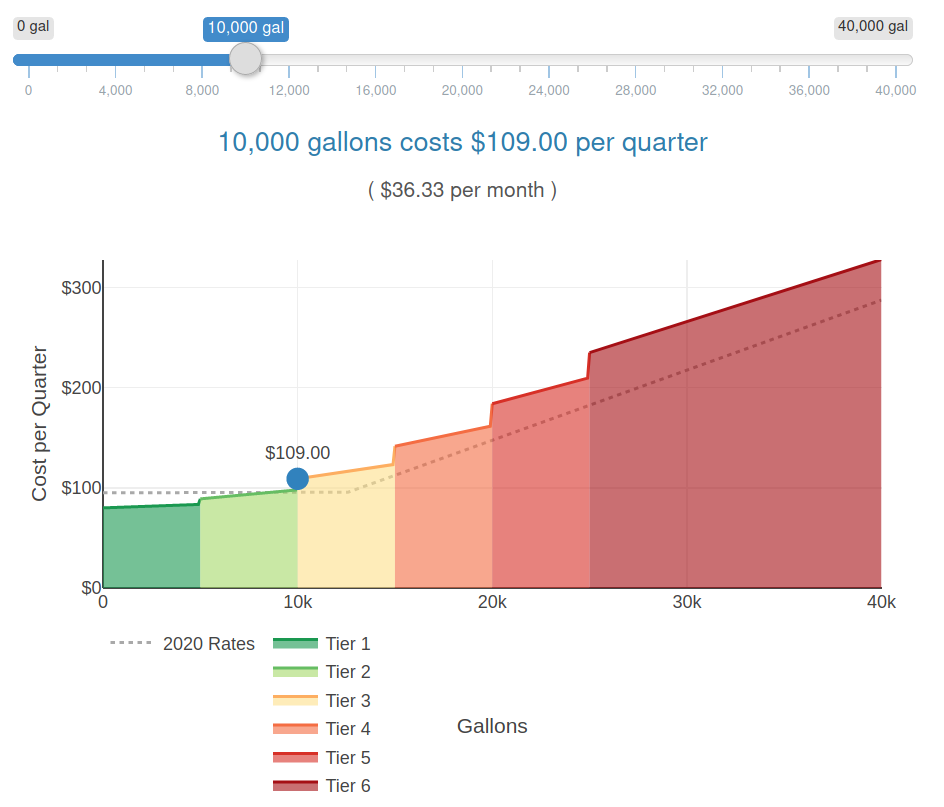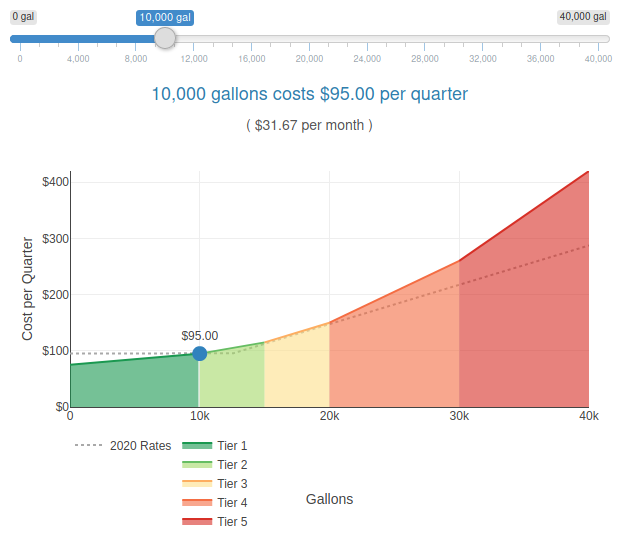SGFD 2021 Water Rates
Water Rates Changing in 2021
I live in the southern part of Georgia, Vermont, which is a small rural community of 190 households which (strangely?) has its own water utility called The South Georgia Fire District. They publish a newsletter periodically, and the November 2020 edition included a proposed water rate change for 2021.
The idea behind the change is to have a more usage-based pricing structure. Pay for what you use—great! The more water you use, the more you pay. This makes sense and will encourage water conservation. Our system has actually run out of water before, so conservation is important for our little community.
To do this, the rate change is based on a number of usage-tiers.
Pricing Calculator
The rate change does mean that a little more than half of the 190 households will end up paying more for the same amount of water in 2021 compared to 2020. And the new tiers make calculating water bills a little more complicated.
To help out other water customers, I built a water rate calculator in shiny where they can enter their expected quarterly water usage and:
- See what their bill will be
- Compare the cost against the 2020 price
I thought this was a neat way to do some shiny programming and light analysis while making something useful for folks in my area. The exact water rate numbers can be found in the calculator app.

Variable-Rates Are Sub-Optimal
Encouraging water conservation is important. However, the water committee decided to implement an unusual variable-rate pricing structure rather than a more standard marginal-rate structure.
With variable-rates, the final price per gallon of water is determined by the total amount of usage at the end of an entire quarter. In practice, this means that subsequent water usage will increase the price of past water usage. The result is that the price curve becomes a step function, which you can see above. This creates a few problems:
- Small usage differences between billing periods can result in large swings in a household’s water bill
- Water system revenue becomes overly sensitive to small changes in usage
(1) can make customers feel like they are being punished for their water usage rather than encouraged to conserve, and (2) makes it harder for the water system to accurately forecast revenue, which is difficult enough given the small customer base.
Marginal-Rates Are Better
A marginal-rate pricing structure would have been better. Here, each additional gallon of usage comes at an increasing cost. This could still be a tiered relationship or continuous function. The important characteristic is that there are no arbitrary points at which the total cost of water jumps suddenly—the pricing curve is smooth.
I advocated for such a pricing structure but was unable to make the case sufficiently for the board to alter their decision. I suppose it is only typical that my first real exposure to local politics was less than satisfying!

